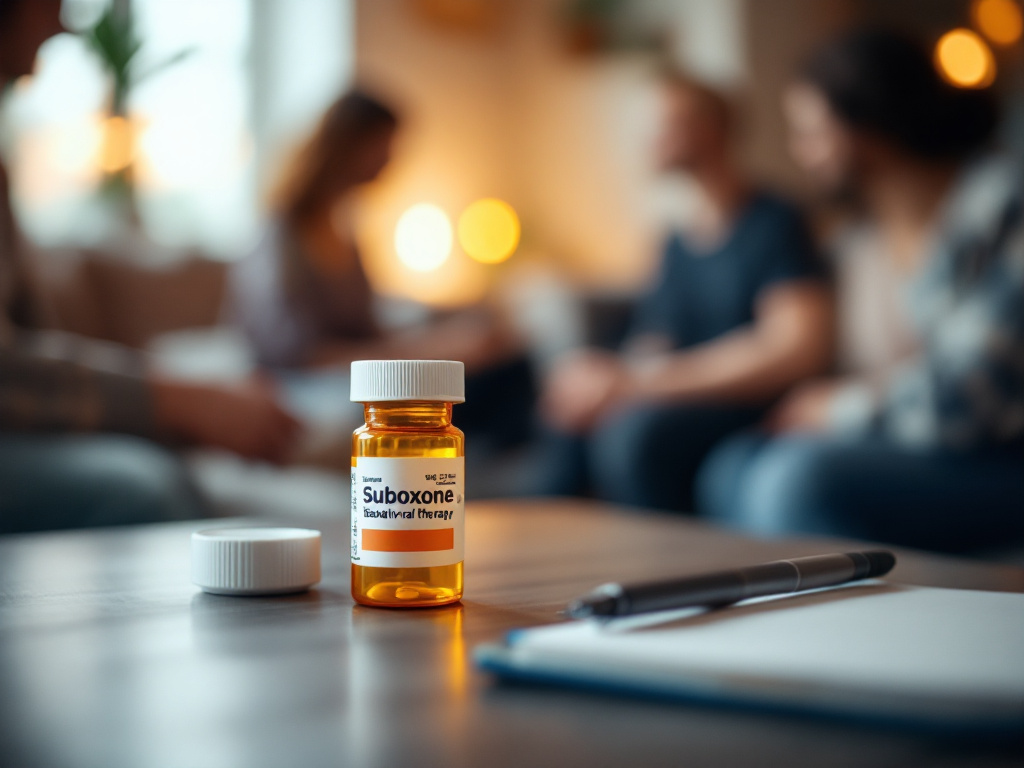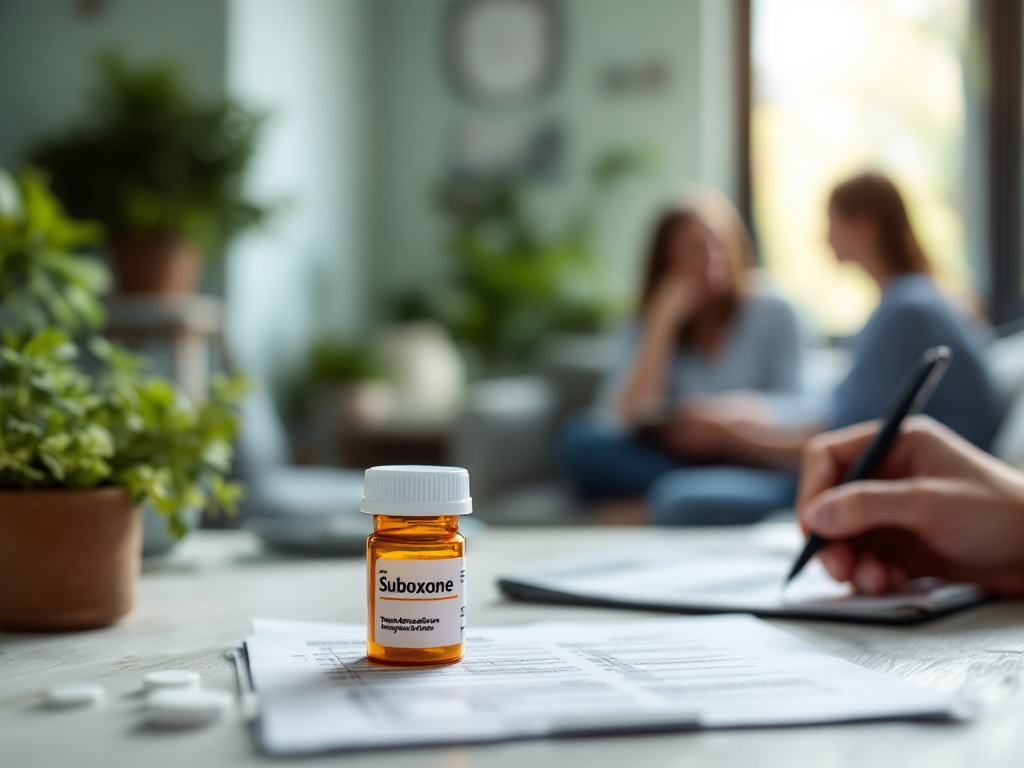Understand medication-assisted recovery
When you explore buprenorphine addiction treatment services, you want clear guidance that sets you on a path to lasting recovery. Outpatient medication-assisted recovery combines prescription therapy with supportive care to address opioid dependence. By choosing a program tailored to your needs—one that works with your insurance and offers same-day access—you’ll benefit from reduced cravings, managed withdrawal, and integrated counseling for whole-person healing.
Buprenorphine fundamentals
Buprenorphine is a partial opioid agonist approved by the U.S. Food and Drug Administration to treat opioid dependence and pain. It works by binding to the brain’s opioid receptors, reducing cravings and withdrawal symptoms without producing the full “high” of other opioids. Compared to full agonists, buprenorphine carries a lower risk of overdose and life-threatening respiratory depression, making it a cornerstone of outpatient medication-assisted treatment (MAT) [1].
Benefits and risks
A balanced view of buprenorphine therapy helps you weigh its advantages and potential drawbacks:
| Benefit | Risk or Consideration |
|---|---|
| Reduces withdrawal severity | Possible side effects—nausea, constipation |
| Lowers cravings and overdose risk | Risk of dependence and misuse |
| Can be prescribed in physician offices | Requires monitoring and adherence |
| Supports transition away from illicit opioids | May interact with other medications |
In clinical studies, patients on buprenorphine achieved sustained recovery outcomes: at 12 months, 51% of participants had successful treatment results, and 93% showed negative urine tests for illicit opioids and cocaine at regular intervals [2].
Explore treatment services
Office-based programs
Office-based opioid treatment (OBOT) allows you to receive buprenorphine prescriptions in a primary care or addiction medicine setting. You’ll meet with a physician or nurse practitioner for initial assessment, induction, and follow-up visits. This model integrates addiction care into your regular healthcare routine, making it easier to balance treatment with work or family commitments. To find a nearby clinic that accepts your insurance, see our outpatient addiction medicine provider options.
Virtual clinics
Telehealth expands your access to Suboxone and buprenorphine therapy without leaving home. Video visits let you connect with a certified provider, complete assessments, and receive e-prescriptions. Virtual programs often offer flexible scheduling, including evenings and weekends, so you can fit treatment into your life. Position Freedom Healthcare’s virtual suboxone medication clinic provides same-day telehealth scheduling to get you started quickly.
Evaluate insurance coverage
Covered services
Your insurance plan determines which services and providers are in-network and how much you’ll pay out of pocket. Typical covered components include:
- Buprenorphine or Suboxone prescriptions
- Physician or nurse practitioner visits
- Counseling and behavioral therapy
- Telehealth consultations
Review your policy documents or contact your insurer to confirm coverage for outpatient MAT. You can also explore options through our buprenorphine treatment covered by insurance page.
Out-of-pocket costs
Even with coverage, you may encounter co-payments, deductibles, or coinsurance. Ask your provider’s billing department for an estimate of expected costs per visit and prescription. If affordability is a concern, inquire about sliding-scale fees, patient assistance programs, or generic buprenorphine formulations.
Access initial appointment
Same-day scheduling
Getting started promptly can reduce the risk of relapse. At Position Freedom Healthcare, you can request a same day buprenorphine appointment via telehealth or in-office visit. Rapid access ensures you begin induction at the right moment—once you’ve abstained from opioids for 12 to 24 hours and entered early withdrawal—to avoid precipitated withdrawal.
What to expect
Your first session typically includes:
- Intake assessment
- Medical history and physical exam
- Evaluation of opioid use patterns
- Discussion of treatment goals
- Initial dose of buprenorphine
Be prepared to share details about your substance use, mental health history, and any medications you take. Honest disclosure helps your provider tailor the plan to your unique situation.
Set up treatment plan
Taper and maintenance
A successful plan balances tapering to a stable dose with maintenance strategies. Some patients taper gradually over weeks or months, while others remain on a maintenance dose indefinitely. Work with your provider to create a suboxone taper and maintenance plan or set up a personalized schedule through our buprenorphine treatment plan setup service.
Management strategies
Incorporate these elements into your treatment plan:
- Regular follow-up appointments to adjust dosing
- Urine drug screening to monitor adherence
- Collaborative care model involving physicians, nurses, and counselors [2]
- Crisis planning and 24/7 support contacts
This structured approach fosters accountability and helps you stay on course.
Combine medication therapy
Behavioral integrations
Medication alone is rarely sufficient. Pair buprenorphine therapy with evidence-based behavioral treatments, such as cognitive behavioral therapy and motivational interviewing. Our suboxone and behavioral therapy program integrates one-on-one counseling, group sessions, and family education to address the emotional and psychological aspects of addiction.
Peer support
Connecting with others in recovery can enhance motivation and reduce isolation. Consider:
- Local or virtual support groups
- Recovery coaching
- Online forums moderated by professionals
Peer networks reinforce commitment and provide practical advice from people who understand your journey.
Monitor your progress
Tracking adherence
Consistent use of buprenorphine is key to preventing relapse. Your provider may use:
- Urine drug tests at 3, 6, 9, and 12-month intervals—93% of patients in one study tested negative for illicit opioids and cocaine at these points [2]
- Pharmacy refill histories
- Self-report logs
Review data with your care team to celebrate milestones and address challenges early.
Managing side effects
Common side effects include:
- Nausea
- Constipation
- Headache
- Fatigue
Serious risks, such as respiratory depression, are rare but require prompt medical attention. If you experience concerning symptoms, contact your provider immediately to adjust your dose or explore alternative therapies.
Choose your provider
Provider qualifications
Select a clinic with skilled practitioners who specialize in outpatient MAT. Look for:
- Board-certified addiction medicine or psychiatry physicians
- SAMHSA-certified opioid treatment programs
- Integrated care teams—physicians, nurse care managers, counselors
Our outpatient mat clinic accepting insurance meets these standards, ensuring comprehensive support under one roof.
Key questions
Before you commit, ask potential providers:
- What is your experience prescribing buprenorphine?
- How quickly can I schedule my first appointment?
- Do you offer telehealth follow-ups?
- Can you coordinate counseling and peer support?
- How do you handle emergencies or missed appointments?
Clear answers will help you choose a program aligned with your goals.
Take next steps
Continuing care
Recovery is an ongoing process. After stabilization, transition to a long-term plan that may include:
- Periodic medication reviews
- Maintenance or taper adjustments
- Ongoing counseling and support groups
Regular check-ins reduce the risk of relapse and support lasting wellness.
Support resources
Tap into trusted resources for additional guidance:
- SAMHSA Buprenorphine Guide [3]
- Narcotics Anonymous meetings
- Community health center counseling
Position Freedom Healthcare is here to walk alongside you. Schedule your same-day telehealth appointment now and discover how our outpatient MAT programs can support your journey to recovery.
References
- (Healthdirect)
- (NCBI)
- (SAMHSA)











